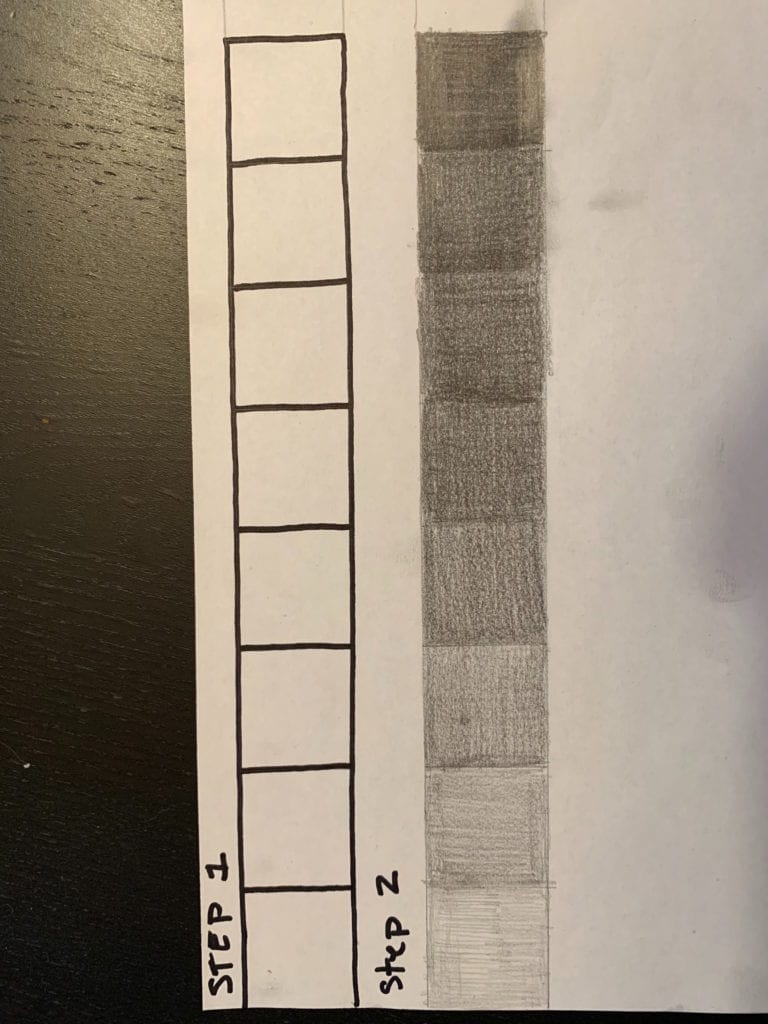Assignment #2 Directional Shading
- Use the image that I attached along with the vocabulary words below to gain an understanding of directional shading.
- Fold a piece of blank paper into 4 sections.
- In each section draw one of the following: cube, cone, sphere, and cylinder. Indicate where you want the light to come from with an arrow and lightly label the light medium and dark shadows on each object with L, M, and D.

Assignment #1 Value Scale
- Use a blank piece of paper. Computer paper is fine. Draw two lines that are 2″ apart (one on top and one on bottom, horizontal).
- Then draw 7 vertical lines spaced 1″ apart that connect the two horizontal lines.
- Using a pencil start shading from lights to darkest. No smudging with your finger or anything else! You should have 8 different values from light to dark.

Value
Value – A range of various shades and tints and/or white to black; including all the
tones/hues that occur between the two extremes.
Value Scale- An illustration that shows a sequential range of light to dark.
Directional Shading- Shading done in a controlled and purposeful direction.
Value Contrast- Placing light and dark values with strong differences next to each other.
Gradation- A gradual blended change in shaded value.
Light Source/Sun Source – In painting and drawing, the location of the light/sun
source(s) illuminating the subject.
Cube- A symmetrical 3D shape contained by 6 equal squares.
Cylinder- A solid geometrical figure with straight parallel sides and an oval cross
Section.
Sphere- A round solid figure with every point it’s surface equidistant from it’s center.
Cone- An object that tapers from a circular base to a point.
Contrast (Variety, or Gradation) – The use of different lines, shapes, textures, colors and
other elements of design to create interest in a work of art.
Unity or Harmony – A pleasing agreement of all the individual parts (elements) within
one particular artwork.
Composition- The arrangement of elements such as line, value,and form within an artwork.
Hi Mrs Curtis I forgot that we had a meet and I was well to ask if I can get excused for it
It is your responsibility to make it to the meetings. Stat using a calendar to keep your self on track